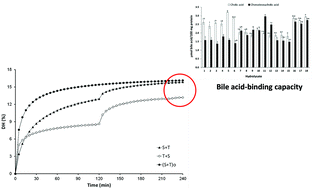Bile acid binding capacity of fish protein hydrolysates from discard species of the West Mediterranean Sea
Abstract
Fish protein hydrolysates (FPH), produced from the six main discard species from the West Mediterranean Sea (sardine, horse mackerel, axillary seabream, bogue, small-spotted catshark and blue whiting) were tested for their bile acid binding capacity. This capacity is directly linked to the ability to inhibit bile reabsorption in the ileum and therefore to lower cholesterol levels in the bloodstream. From each species, FPH were obtained by three different enzymatic treatments employing two serine endoproteases (subtilisin and trypsin) sequentially or in combination. The results show statistically significant differences among the fish species, attaining interesting average values of bile acid binding capacity for blue whiting (27.32% relative to cholestyramine on an equal protein basis) and horse mackerel (27.42% relative to cholestyramine on an equal protein basis). The enzymatic treatments did not significantly affect the ability of a given species to bind bile acids. These results are similar to other protein sources, such as soy protein or casein, of proven hypocholesterolemic effect. It can be concluded that fish protein hydrolysates from these discard species are suitable as ingredients in the formulation of cholesterol-lowering supplements.


 Please wait while we load your content...
Please wait while we load your content...